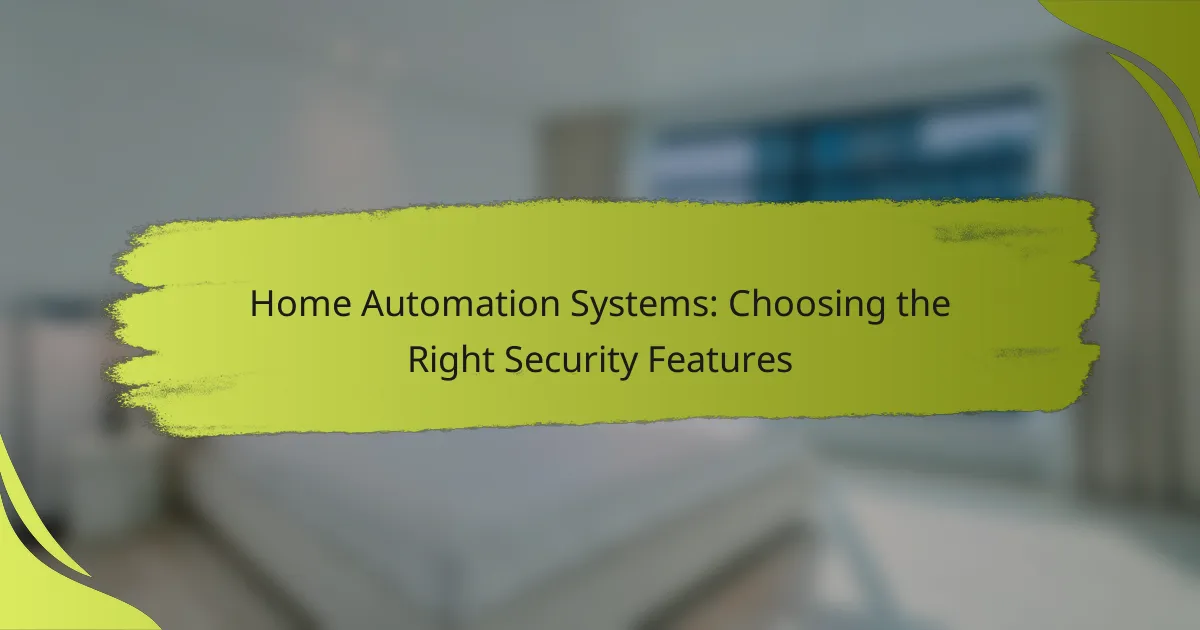Home automation systems offer a range of security features designed to enhance safety and convenience. From smart locks and surveillance cameras to motion sensors and alarm systems, these technologies provide real-time monitoring and access control. When selecting the right features, it’s essential to assess your specific needs, ensure compatibility with existing systems, and prioritize ease of use for effective home security management.
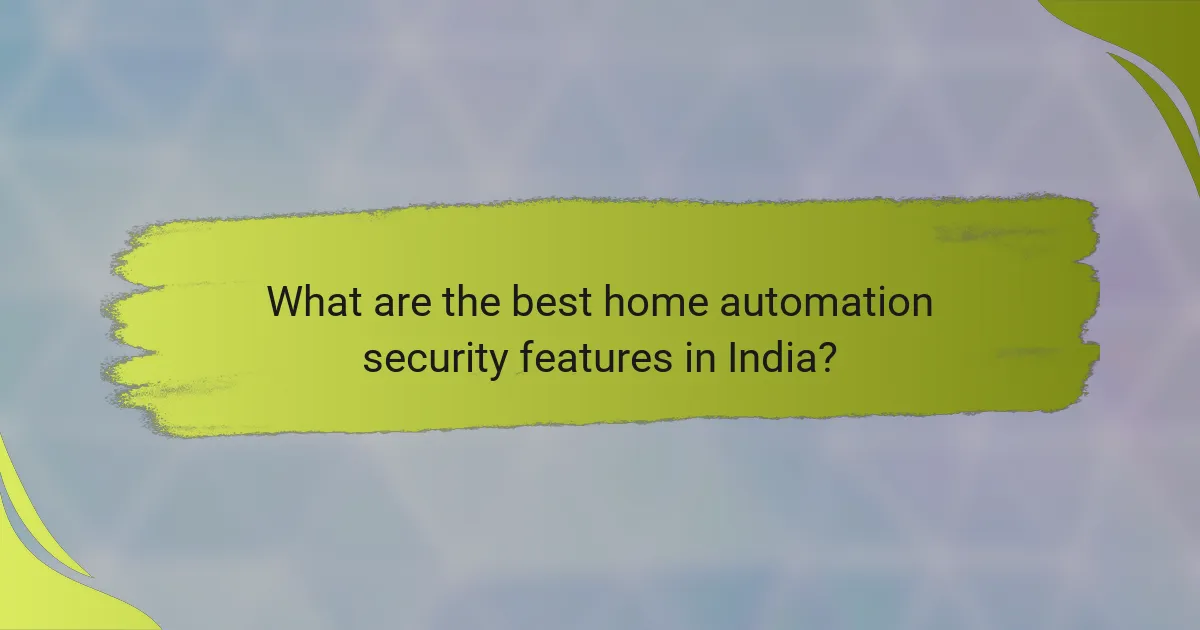
What are the best home automation security features in India?
The best home automation security features in India include smart locks, surveillance cameras, motion sensors, alarm systems, and smart doorbells. These technologies enhance home safety by providing real-time monitoring, access control, and alerts, making them essential for modern security systems.
Smart locks
Smart locks provide keyless entry and can be controlled remotely via smartphone apps. They often include features like temporary access codes for guests and automatic locking mechanisms, enhancing convenience and security.
When choosing smart locks, consider compatibility with your existing door hardware and the type of connectivity (Wi-Fi, Bluetooth, or Z-Wave). Look for models with robust encryption and user-friendly interfaces.
Surveillance cameras
Surveillance cameras are crucial for monitoring your property in real-time. They can be indoor or outdoor models, with options for night vision and motion detection. Many systems allow for remote viewing through mobile apps.
For effective coverage, position cameras at entry points and high-traffic areas. Ensure they have a good resolution (at least 1080p) and consider cloud storage options for recorded footage.
Motion sensors
Motion sensors detect movement and can trigger alerts or activate other security devices. They are often used in conjunction with lights or alarms to deter intruders.
Choose sensors with adjustable sensitivity to minimize false alarms from pets or passing vehicles. Wireless models are easier to install, while wired ones may offer more reliability.
Alarm systems
Alarm systems provide immediate alerts in case of unauthorized access. They can be monitored professionally or self-monitored through mobile apps. Many systems integrate with other smart home devices for enhanced functionality.
Look for systems that offer customizable settings, such as entry/exit delays and different alarm tones. Ensure they have backup power options to remain functional during outages.
Smart doorbells
Smart doorbells allow you to see and communicate with visitors remotely. They typically feature video feeds and two-way audio, enhancing security by allowing you to verify who is at your door without opening it.
When selecting a smart doorbell, consider the video quality, field of view, and storage options for recorded footage. Ensure it integrates well with your existing home automation system for seamless operation.

How to choose the right security features for home automation?
Choosing the right security features for home automation involves assessing your specific needs, ensuring compatibility with existing systems, and prioritizing user-friendliness. Consider features that provide robust protection while allowing for convenient management and remote access.
Assess your security needs
Start by identifying the specific security risks your home faces. Consider factors such as location, crime rates in your area, and the layout of your property. This assessment will help you determine whether you need basic monitoring or advanced features like motion detection and video surveillance.
Next, think about the types of security features that would best suit your lifestyle. For example, families may prioritize child safety measures, while frequent travelers might need remote monitoring capabilities. Tailoring your choices to your unique situation will enhance overall effectiveness.
Consider integration with existing systems
When selecting security features, check how well they integrate with your current home automation systems. Compatibility can streamline operations and enhance functionality, allowing you to control everything from a single app or interface. Look for systems that support common protocols like Z-Wave or Zigbee.
Additionally, consider whether you want to expand your system in the future. Choosing features that are easily integrated with other devices can save you time and money down the line, making it easier to enhance your home security as needed.
Evaluate user-friendliness
User-friendliness is crucial for ensuring that all household members can effectively operate the security system. Look for intuitive interfaces, clear instructions, and easy-to-navigate apps. Systems that require minimal training will be more likely to be used consistently.
Consider features like voice control or mobile notifications that can simplify management. A system that is easy to use will encourage regular engagement, which is essential for maintaining security.
Check for remote access capabilities
Remote access is a vital feature for modern home security systems. It allows you to monitor your home in real-time, receive alerts, and control devices from anywhere using your smartphone or tablet. This capability is especially important for those who travel frequently or spend long hours away from home.
Ensure that the system you choose offers secure remote access options, such as encrypted connections and two-factor authentication. These measures help protect your data and provide peace of mind when managing your home security remotely.
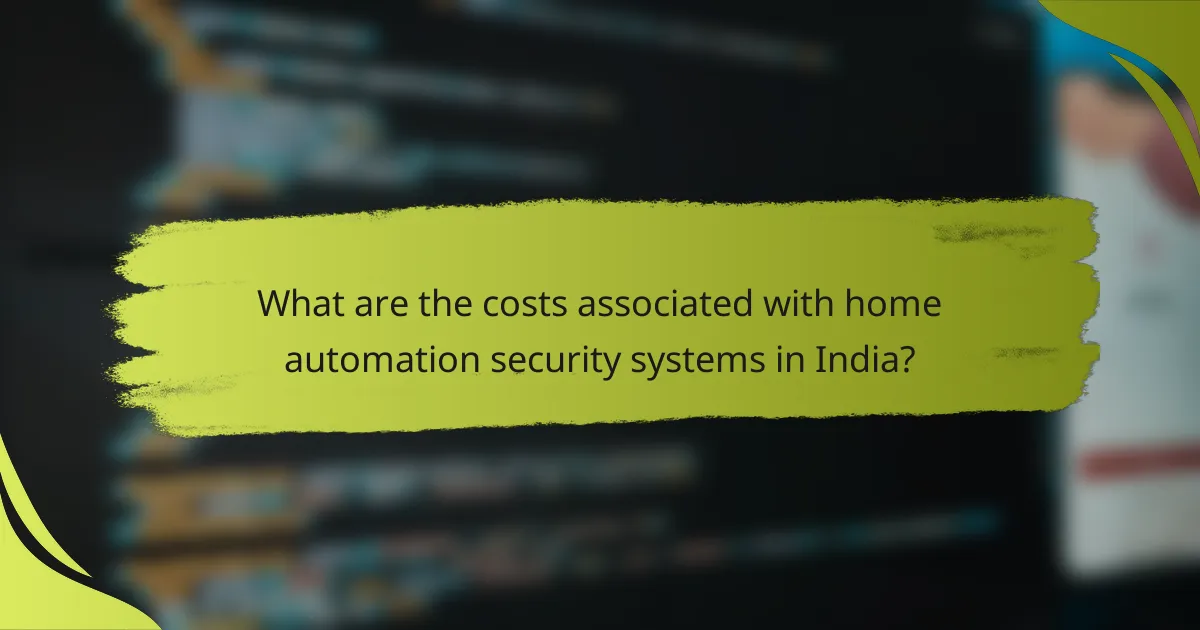
What are the costs associated with home automation security systems in India?
The costs of home automation security systems in India can vary significantly based on the features and services you choose. Generally, you can expect to incur initial setup costs, ongoing monthly subscription fees, and occasional maintenance expenses.
Initial setup costs
Initial setup costs for home automation security systems typically range from INR 15,000 to INR 50,000, depending on the complexity and number of devices installed. Basic systems may include smart cameras, motion sensors, and a central hub, while more advanced setups could incorporate smart locks, alarms, and environmental sensors.
When budgeting for initial costs, consider whether you will install the system yourself or hire a professional. Professional installation can add INR 5,000 to INR 15,000 to your total expenses.
Monthly subscription fees
Monthly subscription fees for monitoring services usually range from INR 500 to INR 2,500. These fees often cover cloud storage for video footage, real-time alerts, and professional monitoring services.
Some systems offer tiered subscription plans, allowing you to choose a package that fits your needs. Evaluate the features included in each plan to ensure you get the best value for your investment.
Maintenance expenses
Maintenance expenses for home automation security systems can vary, but you should budget around INR 1,000 to INR 3,000 annually for routine checks and updates. This may include software updates, battery replacements for devices, and any necessary repairs.
Regular maintenance is crucial to ensure your system operates effectively. Consider setting reminders for routine checks to avoid unexpected issues and ensure your home remains secure.
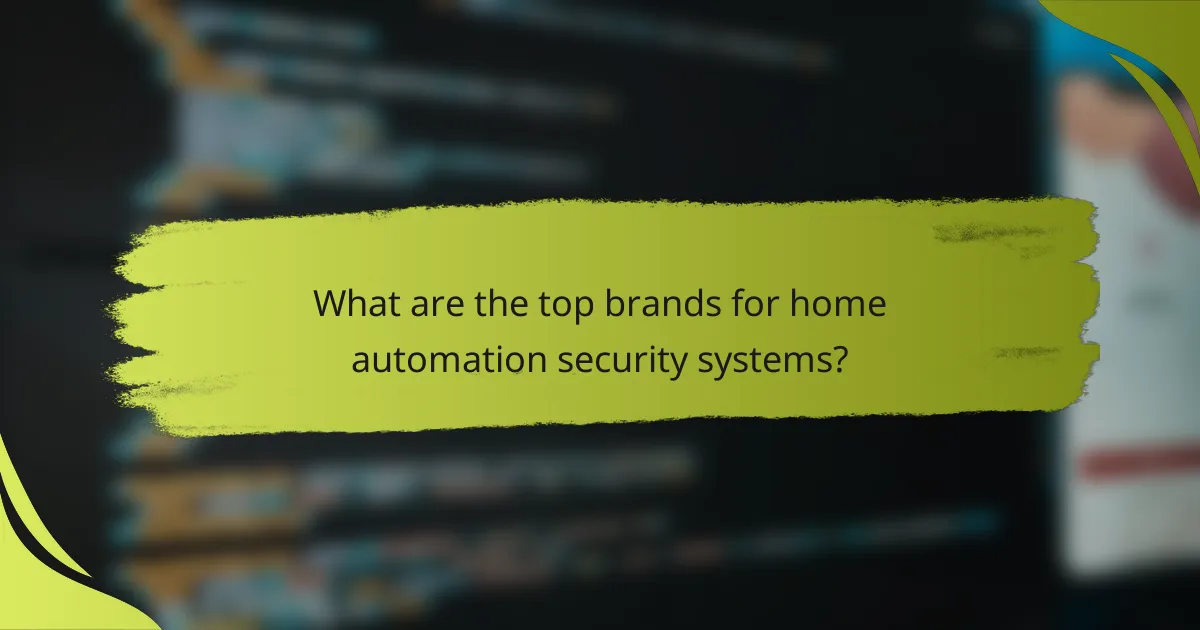
What are the top brands for home automation security systems?
The leading brands for home automation security systems include Philips Hue, Ring, Google Nest, and Amazon Echo. Each brand offers unique features and capabilities that cater to different security needs and preferences.
Philips Hue
Philips Hue primarily focuses on smart lighting but integrates well with home security systems. Its lights can be programmed to simulate occupancy by turning on and off at specific times, which can deter potential intruders.
Consider using Philips Hue in conjunction with motion sensors to create a comprehensive security setup. The system is compatible with various smart home platforms, allowing for seamless automation and control through a single app.
Ring
Ring is best known for its video doorbells and security cameras, which provide real-time video feeds and motion alerts. The Ring app allows users to monitor their property remotely and communicate with visitors through two-way audio.
When choosing Ring, consider the subscription plans for cloud storage, which can vary in price. The devices are easy to install and can be integrated with other Ring products for a complete security solution.
Google Nest
Google Nest offers a range of smart home devices, including security cameras and smart doorbells. The Nest Cam provides high-definition video and can distinguish between people, pets, and vehicles, enhancing security monitoring.
Integrating Google Nest with other Google Home devices allows for voice control and automation. Be aware of privacy settings and data sharing options, as they are crucial for maintaining security in your home automation system.
Amazon Echo
Amazon Echo devices serve as smart hubs that can control various home automation systems, including security features. With Alexa, users can set routines that include security alerts, lighting, and camera monitoring.
When using Amazon Echo for security, consider enabling skills that enhance monitoring capabilities, such as connecting to compatible security cameras or alarms. Regularly update your device to ensure it has the latest security features and fixes.
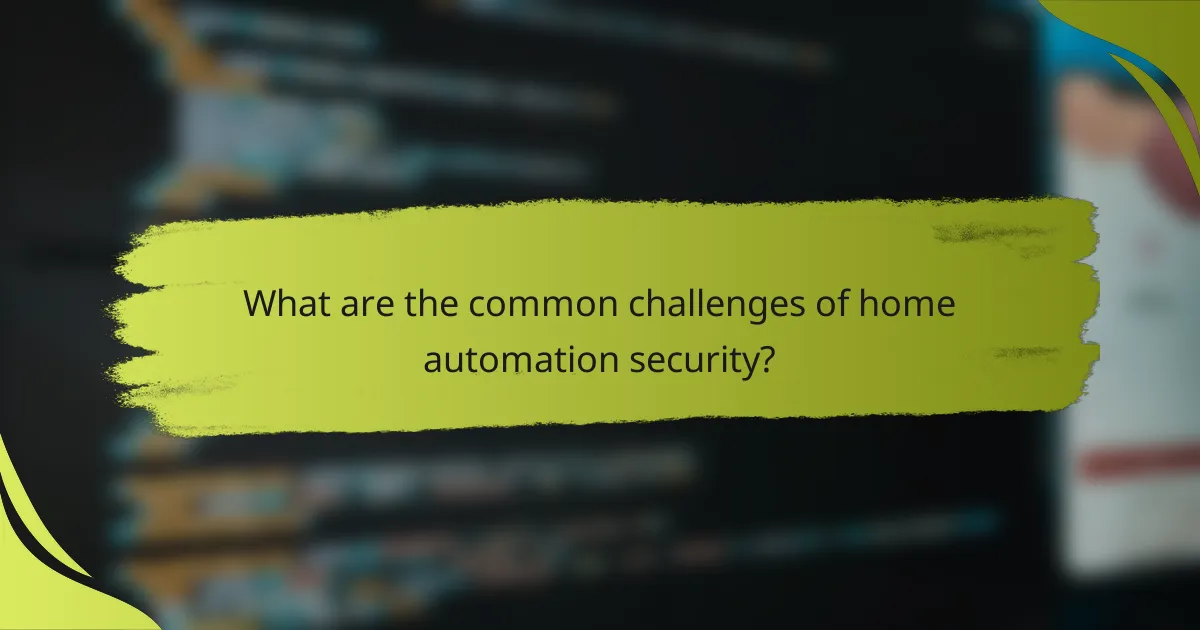
What are the common challenges of home automation security?
Home automation security faces several challenges, including vulnerabilities in devices, network security issues, and user management. These challenges can lead to unauthorized access or data breaches if not properly addressed.
Device vulnerabilities
Many home automation devices have inherent vulnerabilities due to outdated software or weak default passwords. Regularly updating firmware and changing default credentials can significantly enhance security. It’s crucial to research devices before purchase, focusing on those with a strong reputation for security.
Network security issues
Home automation systems often rely on Wi-Fi networks, which can be susceptible to hacking if not secured properly. Using strong encryption protocols like WPA3, setting up a separate network for smart devices, and regularly changing Wi-Fi passwords can mitigate these risks. Consider using a Virtual Private Network (VPN) for added security when accessing devices remotely.
User management
Managing user access is essential to maintaining home automation security. Limit access to trusted individuals and regularly review user permissions. Implementing two-factor authentication (2FA) can provide an additional layer of security, ensuring that only authorized users can control the system.
